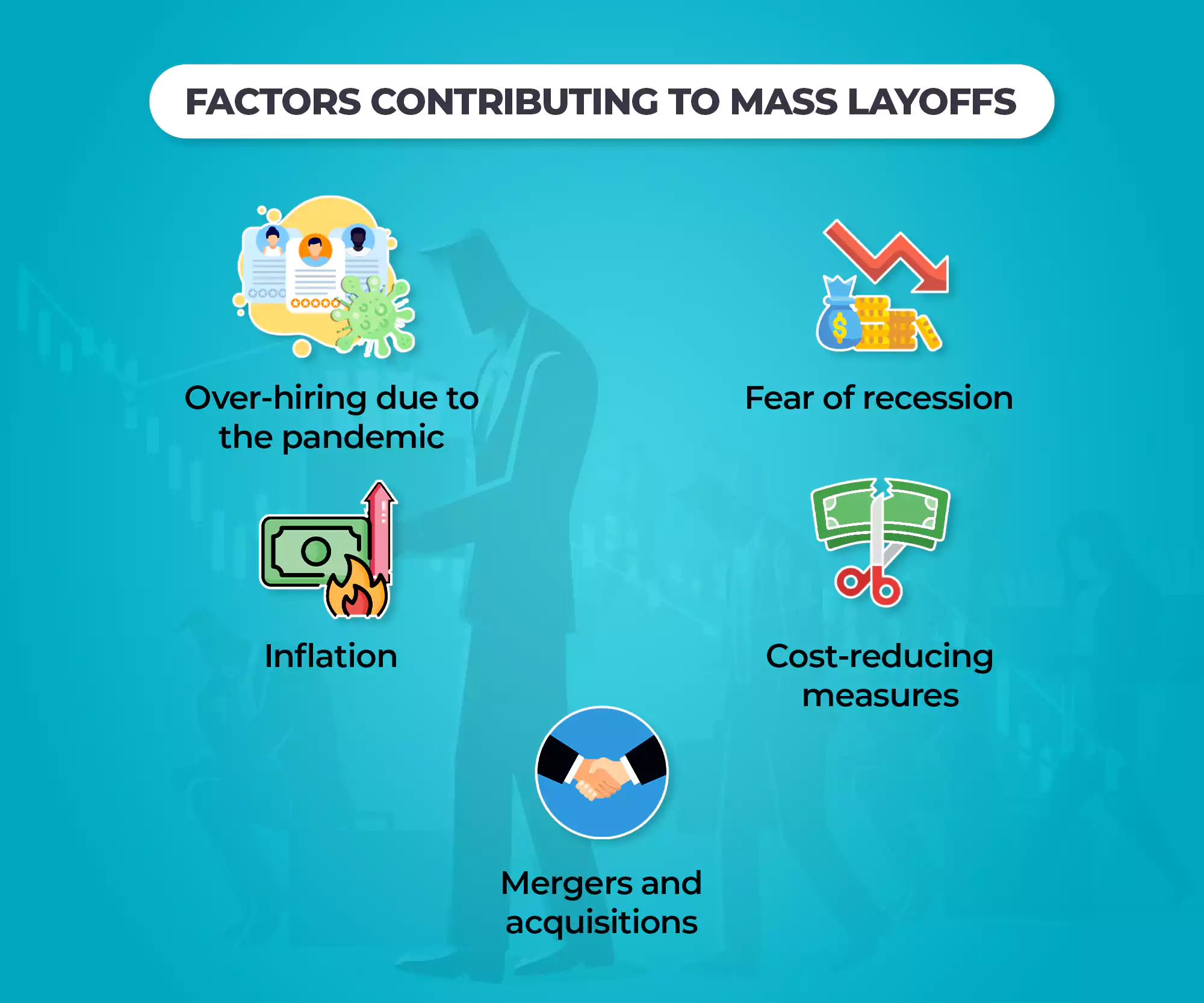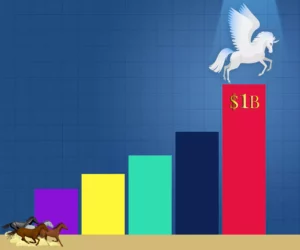
Imagine working on your laptop and suddenly getting logged out of your Slack account. Plus, you find that your office email isn’t active anymore. Scary, isn’t it? In recent news, thousands of Twitter employees had this same experience once Elon Musk took over the company. And it’s not just the case with Twitter; most tech firms, including Meta, Amazon, Peloton, Stripe, and Snapchat, are undergoing mass layoffs. Let us understand why this happens and how it impacts the workforce of a particular industry.
What do mass layoffs indicate?
Mass layoffs aren’t uncommon in the business world because the nature of the workforce is constantly in flux. As a result, organisations often have to realign their workforce with the current trends, leading to the disruptive phenomenon of layoffs. Although it’s devastating for an employee, companies tend to practise it to deal with particular business pressures. These pressures could include companies’ failure to achieve their profitability targets resulting in certain tough decisions such as cost-cutting.
From a worker’s standpoint, finding a new job is exhausting. It takes weeks to negotiate your position, conditions, and salary. Layoffs can become a significant demotivating factor for employees on so many levels. When individuals in a workplace are affected, the economy, as a whole, also gets affected.
Why the tech industry is suffering
Early this year, Apple made some significant changes to its privacy policy, due to which Meta lost $10 billion in ad revenue. Advertising expenditure on Google is also slowing down. Additionally, Elon Musk said advertisers are wary of spending money on Twitter. Every giant is struggling with advertising issues in today’s economy. This ad-revenue decline is one of the critical aspects that result in the restructuring of firms, causing layoffs.
Employees in the tech industry, specifically, have suffered a massive blow. Silicon Valley has been bleeding employees in a particularly nasty spate of layoffs. The reasons behind these layoffs include the enormous hiring to recover from the pandemic. As a result, thousands of tech workers are now out of a job. The numbers are striking, and the stories are disheartening. Layoffs are smashing the tech sector hard, but they don’t stop there.
The housing market, for instance, also witnessed a pre-pandemic boom. But soon after that, corporations knew the pandemic would impact market sentiments, and housing sales would remain muted. Moreover, the increased interest rates and real-estate companies’ focus on cost-cutting measures led to layoffs. For instance, Redfin Corporation, a Seattle-based real-estate firm, is laying off employees for the second time this year. It has decided to cut 13% of its workforce.

Mass layoffs in 2022
1. Twitter
After Elon Musk took over the micro-blogging platform, Twitter laid off thousands of employees across departments. As we described before, their firing process was abrupt and inconsiderate. Several employees have complained about their laptops being remotely logged out and being taken off the company’s communication platforms. But according to Musk, these layoffs were necessary as Twitter faced serious revenue challenges as advertisers backed off due to fear of recession.
2. Amazon
E-commerce giant Amazon surprisingly announced in mid-November that it’s putting a pause on hiring for the next few months to adjust its business to the current economic trends. In addition, a recent report suggests 10,000 Amazon employees will get a pink slip in the largest-ever layoff. This mass layoff will be the largest in this company’s history, accounting for approximately 3% of Amazon’s corporate workforce.
3. Meta
In the name of restructuring, Meta, the parent company of Facebook, first froze its hiring and is now planning to lay off around 13% of its workforce, approximately 11,000 employees. ‘It’s one of the hardest calls I’ve had to make in 18 years of running the company,’ said Zuckerberg in an attempt to soften the blow of the layoffs. It didn’t do the trick, though, especially given Meta’s aggressive acquisitions of its rivals.
4. Byju’s
Byju’s, India’s favourite unicorn company valued at $22 billion, is one of the nation’s biggest ed-tech firms. But when it came to layoffs this year, the company showed it wasn’t any exception. The firm recently fired 2500 employees to achieve its profitability targets by the end of FY23. The company also reported a loss of INR 4588 Cr in FY21.
5. Peloton
The at-home gym equipment company that picked up steam during the pandemic is now making a fourth cut in its workforce this year. During the quarantine, the equipment sold by Peloton reached new and great heights. But soon after that, supply chain issues and falling demand forced the company to succumb to layoffs.
Are mass layoffs indicative of an upcoming recession?
A recession is a broad and persistent decline in economic activity. Predicting an upcoming recession is a complex task. Industrial production, consumer expenditure, mortgage rates, unemployment status, and many other factors help determine a recession. Whether we are in one or not is also arbitrary, as we have scholarly opinions to support both sides. But, undeniably, the fear of recession is looming across the globe.
Let’s go one step further and break down what layoffs mean on an individual level. The essential questions that a person usually asks are: Do I have a job? Do my kids have a job? Does my wife have a job?
On a societal level, checking the hiring situation in the market is crucial. The availability of a sufficient number of positions for skilled workers is a strong indicator of a functional economy. In the case of the United States, the layoffs rate has stayed under 1% of the workforce, which is 1.4 million people (July). As a result, most analysts predict that the United States will be in a recession by the end of this year if it hasn’t already. This year has also been challenging for India as around 12,000 startup employees lost their jobs across different sectors.
Are greener pastures on the horizon?
In a sense. There’s ironically a lot more hiring taking place across the globe. So is it a cycle—of people getting laid off and finding a new job, an even better one? Maybe. Employees are trading up and switching jobs for better wages and perks. In such a scenario, employees always have the upper hand, which is a massive shift in the work culture. In fact, in many work cultures, employees are now defining their terms themselves. Millions of people are rethinking their careers, and the industry is in its evolution phase.
Still, the 2022 business year hasn’t been a smooth ride for workers, and it has been hard to determine whether we are in a recession. Layoffs are undoubtedly one of the factors indicating a recession. But regardless of that, as a potential worker, you need to constantly upgrade yourself—be it by developing familiarity with new tech or improving your soft skills. Because companies, more often than not, tend to remove liabilities and not real talents.



